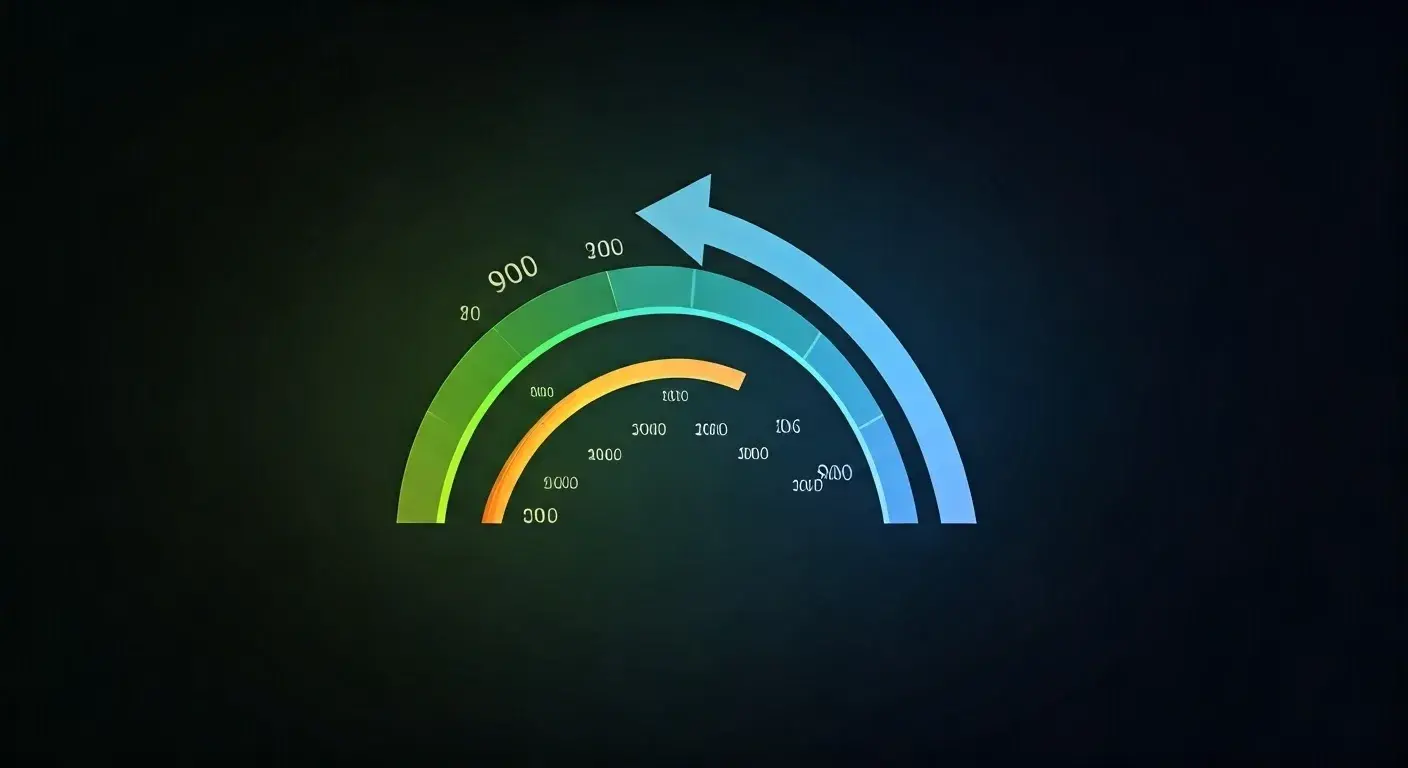Understanding your credit score is crucial for navigating the financial world. Whether you're applying for a mortgage, a credit card, or even a car loan, your credit score plays a significant role in determining your eligibility and the interest rates you'll receive. But with so many different credit scoring models available, it's natural to wonder: which credit score is the most accurate?
The Myth of the "Most Accurate" Credit Score
The truth is, there's no single "most accurate" credit score. The term "accuracy" is subjective in this context. All legitimate credit scoring models aim to predict the likelihood that you will repay your debts on time. They all use similar underlying data, but they weigh different factors and use slightly different algorithms, resulting in different scores.
Instead of focusing on which is "most accurate," it's more important to understand how different models work, what factors they consider, and which scores lenders are most likely to use.
The Key Players: FICO and VantageScore
Two dominant players in the credit scoring world are FICO and VantageScore. Let's explore each in detail:
FICO (Fair Isaac Corporation)
FICO is the most widely used credit scoring model. Founded in 1956, FICO has decades of experience in credit risk assessment. Many lenders, particularly for mortgages and auto loans, rely heavily on FICO scores when making lending decisions.
Understanding FICO Scores
FICO scores range from 300 to 850, with higher scores indicating lower risk. The current versions are FICO Score 8, FICO Score 9, and FICO Score 10, although lenders may still use older versions. Each version refines the scoring algorithm slightly to better predict future payment behavior.
Factors Affecting Your FICO Score
FICO scores are based on five main categories of information from your credit report:
- Payment History (35%): This is the most important factor. Late payments, bankruptcies, and collections negatively impact your score.
- Amounts Owed (30%): This refers to the total amount you owe and your credit utilization ratio (the amount of credit you're using compared to your total available credit). Keeping your credit utilization low (ideally below 30%) is crucial.
- Length of Credit History (15%): A longer credit history generally leads to a better score, as it provides more data for lenders to assess your repayment behavior.
- Credit Mix (10%): Having a variety of credit accounts (e.g., credit cards, installment loans, mortgages) can positively impact your score, showing you can manage different types of credit.
- New Credit (10%): Opening too many new accounts in a short period can lower your score, as it might suggest financial instability.
VantageScore
VantageScore was created in 2006 by the three major credit bureaus: Equifax, Experian, and TransUnion. It's designed to be a more consistent and consumer-friendly scoring model.
Understanding VantageScore
Like FICO, VantageScore ranges from 300 to 850. The current version is VantageScore 4.0.
Factors Affecting Your VantageScore
VantageScore uses a slightly different weighting system than FICO. While the underlying data is similar, the emphasis on certain factors can lead to different scores.
- Payment History (Extremely Influential): Similar to FICO, this is the most important factor.
- Age and Type of Credit (Highly Influential): This combines the length of credit history and the credit mix components.
- Credit Utilization (Highly Influential): How much of your available credit you are using.
- Total Balances/Debt (Moderately Influential): The total amount you owe across all accounts.
- Newly Opened Credit (Less Influential): Opening too many new accounts can still impact your score, but to a lesser extent than other factors.
- Available Credit (Less Influential): The total amount of credit available to you.
Key Differences Between FICO and VantageScore
While both FICO and VantageScore aim to predict creditworthiness, there are some notable differences:
- Minimum Credit History: FICO typically requires at least six months of credit history to generate a score. VantageScore can generate a score with as little as one month of credit history.
- Treatment of Medical Debt: More recent versions of VantageScore and FICO give less weight to paid medical debt in collections.
- Credit Utilization Weighting: While both consider credit utilization, the specific algorithms and weighting may differ, leading to variations in scores based on this factor.
- Adoption by Lenders: FICO is still more widely used by lenders, particularly for major purchases like homes and cars. However, VantageScore is gaining traction, especially among lenders focused on consumer credit cards and personal loans.
Why Your Scores May Vary Across Different Models
Several factors can contribute to differences between your FICO and VantageScore:
- Data Sources: Lenders don't always report to all three credit bureaus (Equifax, Experian, and TransUnion). If one bureau has more complete or different information about your credit history, your scores will likely differ.
- Scoring Algorithms: As mentioned earlier, FICO and VantageScore use different algorithms to weigh the same data.
- Version Differences: Lenders may use different versions of FICO or VantageScore, which can also affect your score.
- Timing: Your credit report is a dynamic document. Updates happen frequently. A snapshot of your credit report taken at one point in time might differ from a snapshot taken a week later, leading to score variations.
Which Score Should You Monitor?
Given that lenders may use different credit scoring models, it's wise to monitor both your FICO and VantageScore. Many credit card companies and financial institutions offer free credit score monitoring services, often providing either your FICO or VantageScore (or both). Check with your existing financial providers to see what they offer.
You can also purchase your FICO scores directly from myFICO.com. VantageScore is often available for free through various websites and apps.
How to Improve Your Credit Scores (Regardless of the Model)
While the specific algorithms of FICO and VantageScore differ, the fundamental principles for improving your credit remain the same:
- Pay Your Bills on Time, Every Time: This is the single most important factor. Set up automatic payments if necessary to avoid missed deadlines.
- Keep Your Credit Utilization Low: Aim to use less than 30% of your available credit on each credit card. Ideally, keep it below 10%.
- Don't Max Out Your Credit Cards: Even if you pay your bill on time, maxing out your credit card can significantly lower your score.
- Don't Open Too Many New Accounts at Once: Spreading out new credit applications over time will minimize the negative impact.
- Check Your Credit Report Regularly for Errors: Dispute any inaccurate information with the credit bureaus. You can obtain a free copy of your credit report from each bureau (Equifax, Experian, and TransUnion) annually at AnnualCreditReport.com.
- Consider Becoming an Authorized User: If you have a friend or family member with a long credit history and responsible credit management, becoming an authorized user on their account can help build your credit (if the card issuer reports authorized user activity to the credit bureaus).
- Be Patient: Building good credit takes time. Consistent responsible credit management is key.
The Importance of Understanding Your Credit Reports
Regardless of which credit score you're looking at, it's imperative to thoroughly review your credit reports. Your credit scores are simply a summary of the information contained within your credit reports. If there are errors or inaccuracies on your reports, this will negatively affect your scores. You are entitled to a free credit report from each of the three major credit bureaus (Equifax, Experian, and TransUnion) once per year, which you can access through AnnualCreditReport.com.
What to Look for on Your Credit Report:
- Incorrect personal information: Ensure your name, address, and other details are correct.
- Accounts you don't recognize: These could be fraudulent accounts opened in your name.
- Incorrect account balances: Check that the balances on your accounts match your records.
- Late payments that you didn't make: Dispute any inaccuracies with the credit bureau and the creditor.
- Duplicate accounts: Sometimes, an account may be listed more than once.
- Closed accounts that are still reported as open: This can affect your credit utilization ratio.
- Bankruptcies that should have been discharged: Make sure your bankruptcy is properly reported.












